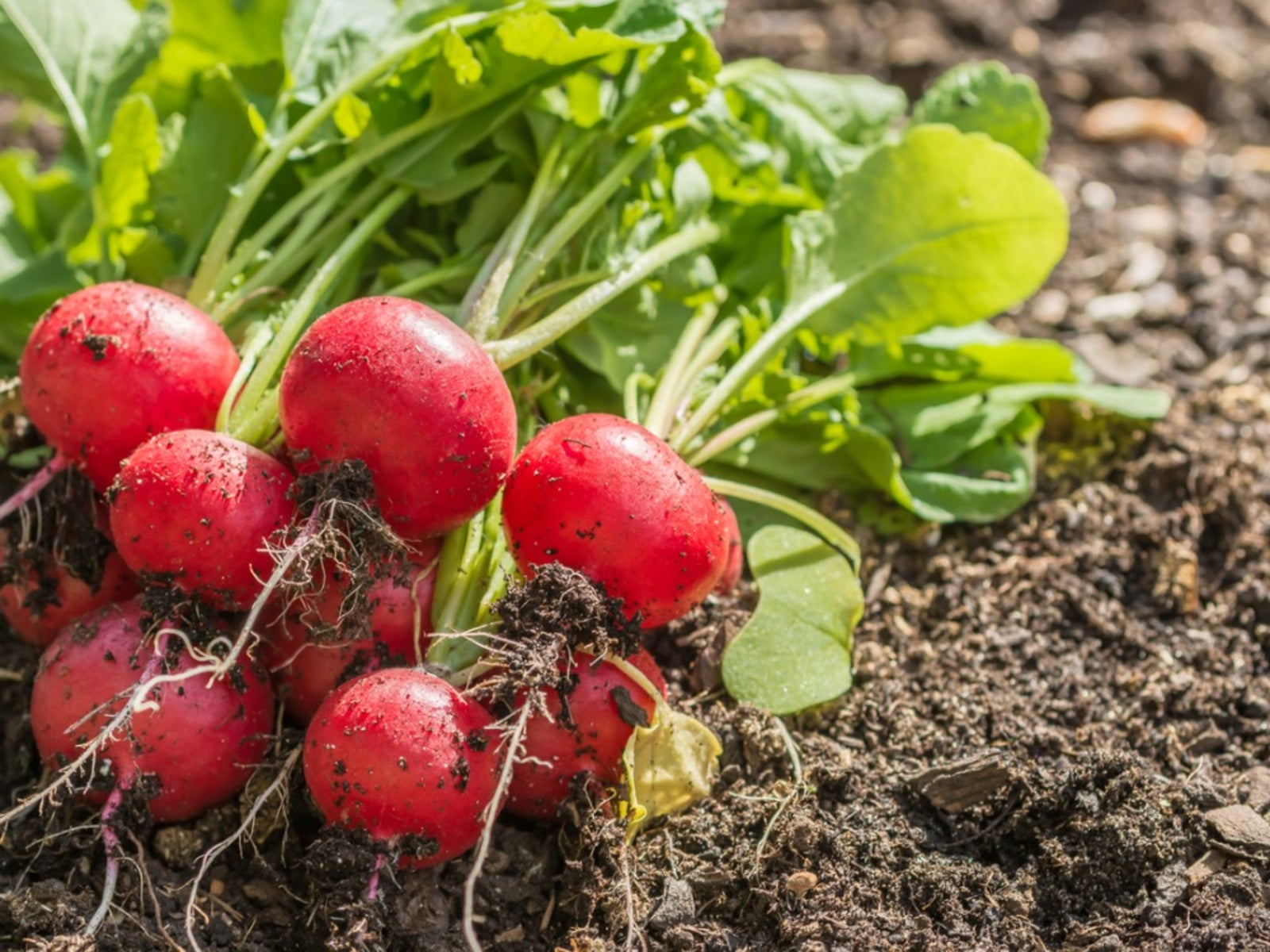Black Root Of Radish : How To Treat A Radish With Black Root


Radishes are quick to produce from seed to harvest. If your roots have dark cracks and lesions, they may have black root disease. Radish black root disease is very contagious and causes severe economic losses in crop situations. Unfortunately, once the crop is infected, it is considered a total loss. Good cultural practices can help minimize the occurrence of the disease.
Symptoms of Black Root of Radish
Black root in radish is a fairly common disease in cool, wet soils. It can occur at any point in plant development, resulting in seedling death or rotten roots. Black root of radish has no cure, but there are several cultural methods that can help protect your crop from this fungal disease. The signs of radish black root disease are unmistakable once the roots are harvested, but initial symptoms can be a little trickier to recognize. In the earliest infections, seedlings will die quickly. More established plants will develop yellowing at leaf margins in a wedge shape. The veins will begin to turn black. A radish with black root that exhibits leaf signs is already developing dark patches on the root. These spread and become cracks and fissures that turn necrotic. The entire root soon becomes black, hence the name of the disease. All plants with signs of the disease should be destroyed, as it is very contagious.
What Causes a Radish with Black Root?
The culprit is a fungus-like organism named Aphanomyces raphani. The organism attacks not only radish but other crucifer vegetables. Cool, wet soil encourages the growth of the disease. Rounded root types seem to be less susceptible to black root than the elongated root forms. Some, such as French Breakfast, can even be planted in areas where previously contaminated crucifers were housed and will remain relatively blemish free. The disease spreads by wind, water splash, insects and animals. It can also be harbored on host plants in the crucifer family or in plant waste. The organism can survive in soil for 40 to 60 days, giving it the potential to re-infect a new crop.
Preventing Black Root in Radish
Crop rotation every 3 years seems to be the most effective way of preventing disease. Clean up old plant debris and remove crucifer type plants in a 5-foot (1.5 m.) radius. Sow seeds in raised beds with excellent drainage. Keep air circulation free around the plants. Practice good cultivation methods and sanitize tools. Solarization of soil may be beneficial. There are currently no registered fungicides for treatment of the disease. Use plant varieties that are resistant such as:
- French Breakfast
- White Spike
- Red Prince
- Belle Glade
- Fuego
Gardening tips, videos, info and more delivered right to your inbox!
Sign up for the Gardening Know How newsletter today and receive a free copy of our e-book "How to Grow Delicious Tomatoes".

Bonnie Grant is a professional landscaper with a Certification in Urban Gardening. She has been gardening and writing for 15 years. A former professional chef, she has a passion for edible landscaping.
-
 8 Perfect Flowers To Plant With Tomatoes To Boost Yields & Banish Pests
8 Perfect Flowers To Plant With Tomatoes To Boost Yields & Banish PestsDon’t forget flowers when choosing companion plants for your tomato beds or pots. These pretty, fragrant flowers add beauty but are also highly beneficial.
By Mary Ellen Ellis
-
 Want The Longest Lasting Hydrangea Flowers? Grow These 8 Panicle Hydrangea Varieties
Want The Longest Lasting Hydrangea Flowers? Grow These 8 Panicle Hydrangea VarietiesFor ornamental shrubs that deliver the longest flowering seasons with plush blooms and delicate hues, these panicle hydrangea varieties are essential in your yard
By Tonya Barnett